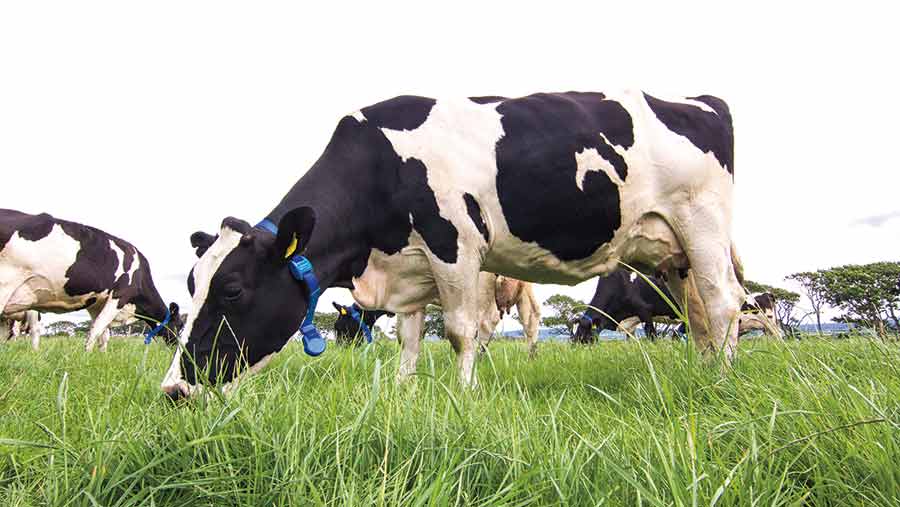Pick the right heat detection system for your farm
 Cow wearing Dairymaster MooMonitor
Cow wearing Dairymaster MooMonitor Automated heat detection systems are a big investment, so how do you decide what’s right for you? We asks farm vet Michael Wilkinson from Nantwich Veterinary Group important questions all cattle farmers should consider before buying such equipment.
Q. What are the key questions to ask before buying an automated heat detection system?
First, ask yourself why you need a system. If you are not achieving desired pregnancy rates, is it mainly due to poor conception figures or because of low insemination rates?
If it is the latter and you are struggling to achieve 21-day insemination rates of 65%+, you are likely to benefit from a new or upgraded method of heat detection. However, it is important to weigh up whether the expected increase in fertility performance and pregnancy rates will be worth the initial investment.
See also: Buyers guide to heat detection systems
There may be other ways to improve heat expression before upgrading or to ensure a new system works to its full potential.
Good nutritional health and locomotion all cause cows to show stronger, more obvious signs of oestrus. Wide passageways or providing extra loafing space on well-grooved concrete works well. Some also find benefits in grouping non-pregnant cows together.
Q. How do you decide what type of activity monitor is right for you?
Whether you opt for pedometers, collars or chalk will largely come down to preference. All can achieve great results if used correctly.
Some of the new collar systems are now adding rumination technology. A cow tends to increase activity and drop rumination when in oestrus. The combination not only appears to be making heat detection more accurate, but it also has the added benefits of providing information on an individual cow and the herd’s health.
Q. Are there any farm limitations to installing these systems?
Heat-detection systems can be installed on almost every farm. Most new systems work by aerials that continually pick up signals, working well even on grazing systems.
Internet connection with wifi is one thing to think about. Some farms struggle with broadband connection and this can limit how well the system works and how the data gets to your computer.
Make sure anyone responsible for breeding can regularly check the computer. Also look at how often data is downloaded. Regular downloading is a big advantage.
Q. Does it matter how the information is displayed or presented?
The display has to be simple and user friendly. Make sure it is easy to get a list of cows in heat that need inseminating, with obvious calving dates and interservice intervals at any time. Smart phone apps and text messages flagging up cows due for insemination can also be useful.
Insemination timing is key. Some of the new systems update regularly when the cow walks past a reader.
They usually provide a time for when oestrus began and an optimum time to inseminate, which is useful as it helps prevent inseminating too late. Ovulation occurs about 24-32 hours after the start of oestrus. It is important that semen is present when ovulation occurs, so serving 12 hours after onset of increased activity is regarded as best practice.
Q. Number of activity monitors needed?
I would always recommend a collar or activity monitor for every cow. It may increase the initial investment, but in my experience it’s worth it. Continually putting on collars after calving and removing at pregnancy diagnosis is not only a hassle, but has other pitfalls.
If you have rumination technology you lose the benefits of this.
The major downside with removing collars is you lose your main heat detection system for cows that reabsorb their pregnancy after pregnancy diagnoses (PD). This is critical on farms that carry out PD early (28-35 days) and use timed AI synchronisation protocols. If collars are removed, I would recommend a second PD at 90-120 days.
Q. Any other areas to think about?
- What is the support like for that brand of system in your area?
- Systems with the highest heat detection rates and high specificity (few false heats) are best.
- Check battery life and ensure there are alternatives for tags not working or when a battery is dead.
- Ability to link the system to a segregation gate so cows in heat are automatically segregated out for AI at each milking.
